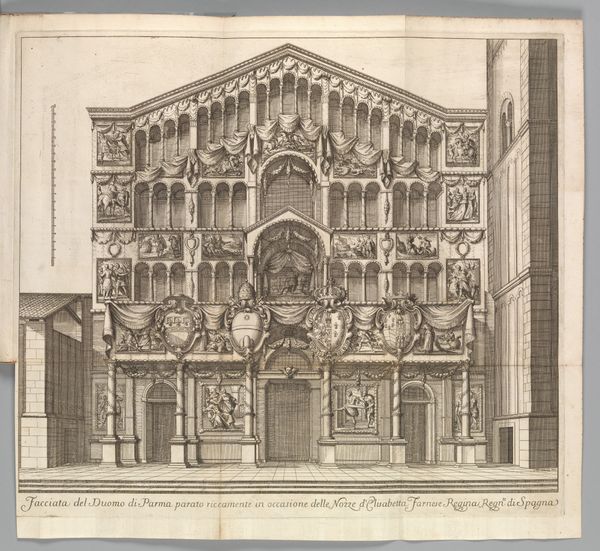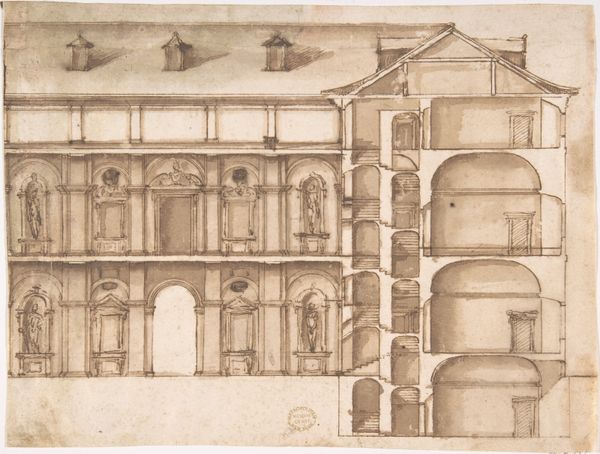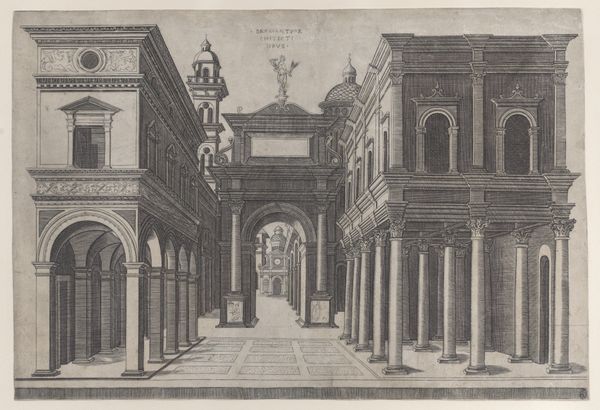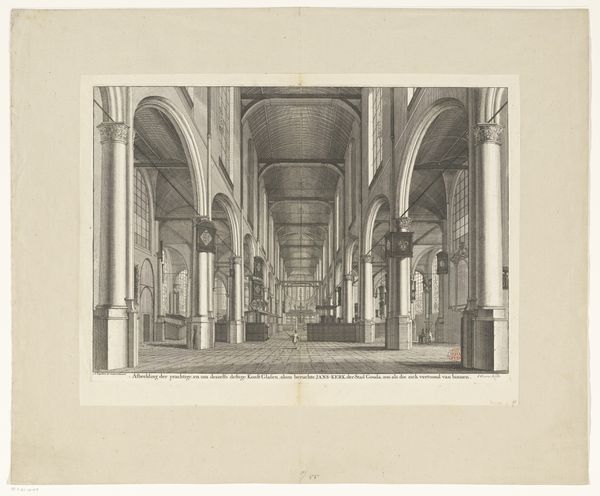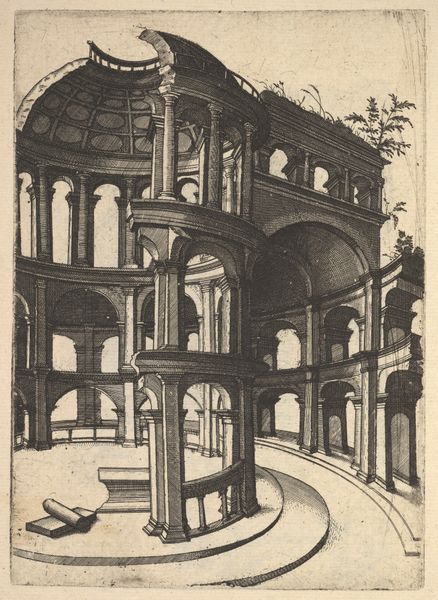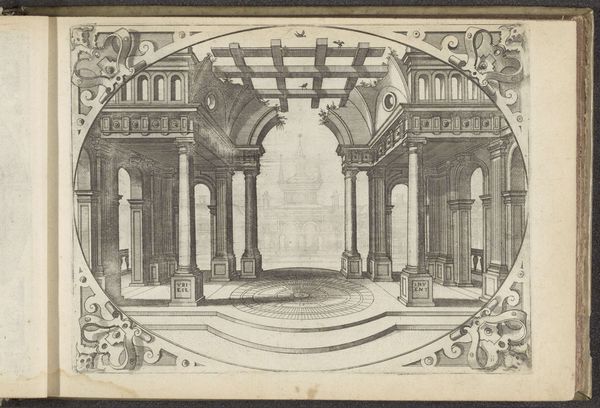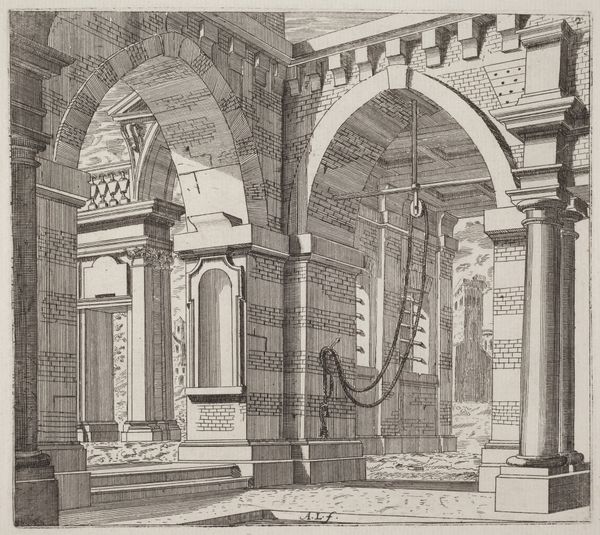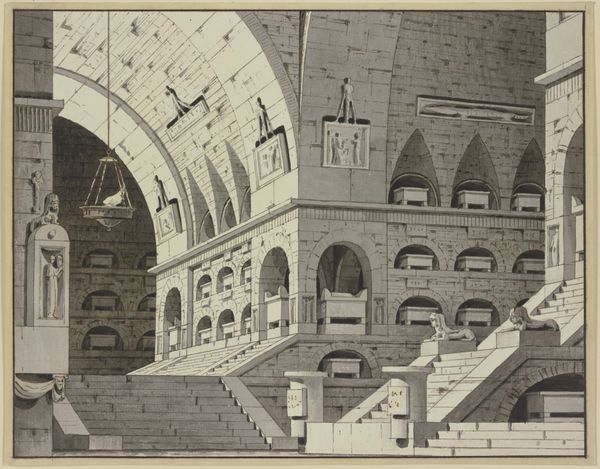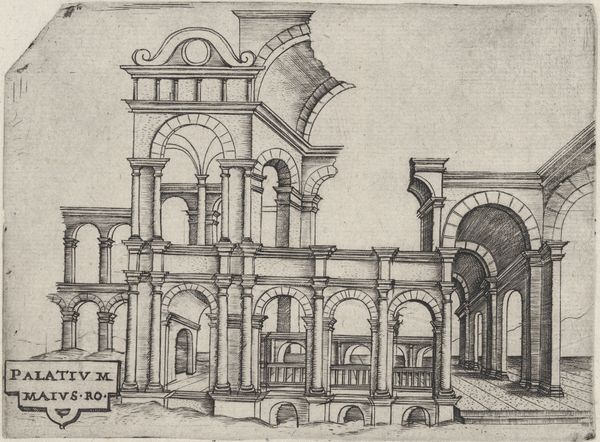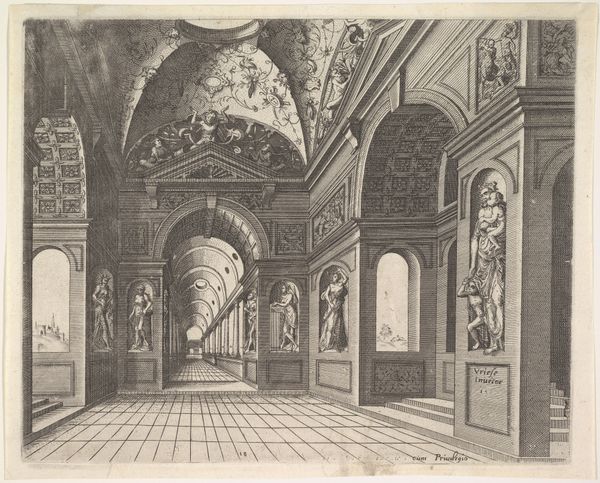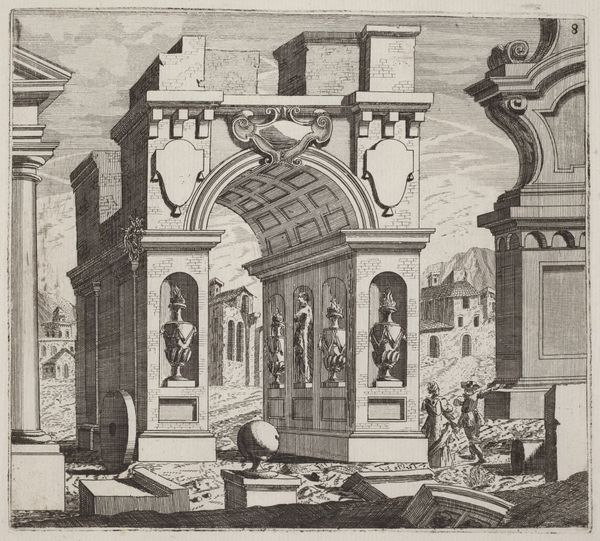
Interieur van de Westerkerk te Amsterdam, gezien naar het oosten before 1631
0:00
0:00
drawing, paper, ink, architecture
#
drawing
#
dutch-golden-age
#
perspective
#
paper
#
ink
#
geometric
#
cityscape
#
architecture
Dimensions: height 339 mm, width 428 mm
Copyright: Rijks Museum: Open Domain
Curator: Here we have an intricate drawing titled "Interieur van de Westerkerk te Amsterdam, gezien naar het oosten," dating from before 1631. It resides here in the Rijksmuseum. The work, executed in ink on paper, meticulously renders the architectural space. What's your immediate reaction? Editor: My gut says: this drawing is architectural striptease! It's a bit like the church is slowly undressing to reveal all its structural secrets, showing off not only its grandeur but also how it was cleverly put together. Curator: I find your reading interesting, as it underscores the duality in play: one, its inherent aesthetic purpose, its aspiration toward representing the divine, but equally valid is how its constituent parts communicate rationality through mathematically verifiable proportions and construction. The graphic semiotics embedded here are dense, with clear, architectonic labeling for educational purposes. Editor: Exactly, its rational elegance is seductive! Look how the perspective lines pull you into the depths of the church. But you can see from the way the image presents the geometric components it might be the architect's notes from his construction process and therefore quite practical and, maybe, mundane. It feels very Dutch Golden Age - ordered but optimistic, the kind of vibe I imagine Vermeer sought. Curator: Precisely. The composition directs our vision, but simultaneously provides detail like a diagram that would not feel out of place for Euclidean proofs. This, coupled with the anonymous provenance of the work, renders it a particularly potent symbol of the age. Editor: An unsigned love letter to problem-solving in its day, but timeless because it represents both tangible and ethereal structures simultaneously. It invites us not just to observe the space but also the method that formed it, doesn’t it? I will leave this place not only appreciative of this old building but the work it took to erect it! Curator: An incisive remark to close, revealing, as it does, that this piece, despite its austerity, engenders within us the very sentiments it strives to depict: respect and awe.
Comments
No comments
Be the first to comment and join the conversation on the ultimate creative platform.
